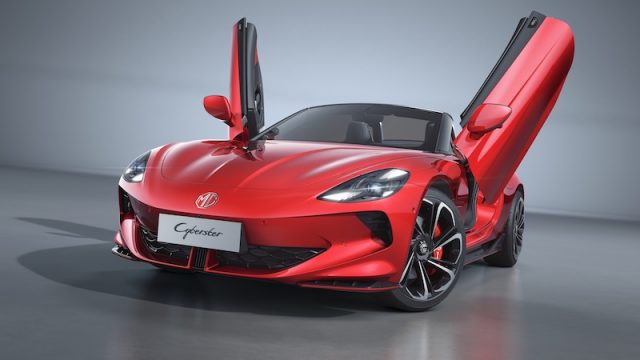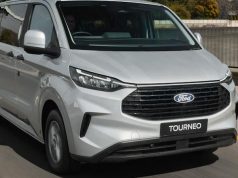The MG Cyberster AWD GT touched down in South Africa in December 2024, just as MG celebrated its 100th anniversary. With a nod to its storied past and an eye on the future, this electric roadster combines blistering performance with the timeless appeal of open-top sports cars.
With a price tag of R1,4 million, MG’s rapid new roadster is ruffling feathers in the cabriolet and sports car establishment, both here and abroad. Not only does it offer faster acceleration than sports cars double the price, but it also stands as one of only two open-top electric sports cars available new. (The other is the Maserati GranCabrio Folgore, though it’s currently not listed as available in South Africa.)
The MG Cyberster’s 2024 arrival and its competitive pricing add a touch of irony when compared to Tesla’s long-delayed Roadster II. Unveiled in 2017 with promises of a 2020 release, Tesla’s “$200 000” Roadster II (below) has yet to enter production.

The Cyberster’s name also draws attention, sharing its “Cyber” prefix with Tesla’s disastrous Cybertruck, a vehicle as innovative as it is divisive.
Is the name MG gave its roadster a dig at Tesla Inc., or is it merely imitation as a kind of flattery? Whichever it is, the MG Cyberster is unlikely to be weighed down by the reliability issues and design flaws that are suffocating the Tesla Cybertruck… and the company’s reputation.
In previous episodes…
But let’s forget Tesla and rewind the clock.
It’s almost twenty years since the last MG sports car model was offered (brand new) in South Africa. This small and sexy mid-engined roadster – the MG TF (pictured below) – was fun to drive but fairly outdated by the time production ended in 2005.
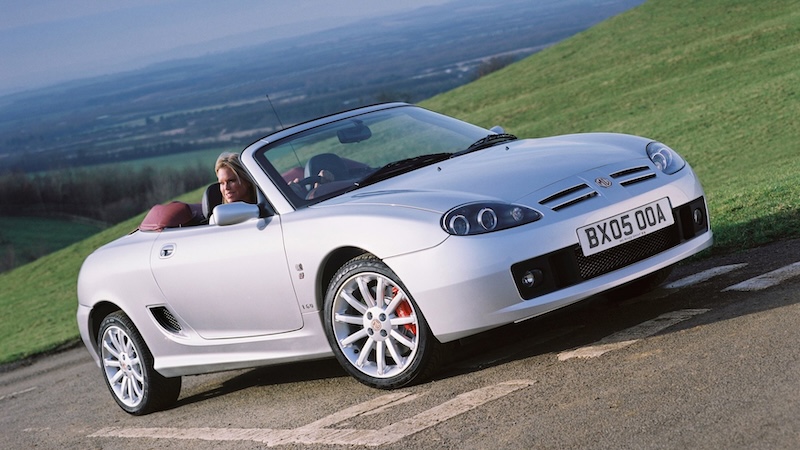
Also, build quality wasn’t among its virtues and I distinctly remember how the plastic cover round the base of the manual gear lever came loose. (Somehow its fake hex bolts couldn’t secure it to the centre console…)
In its final and most powerful iteration, as the MG TF 160, the little British roadster was a fun ride, with 119 kW and 174 Nm from its 1 796 cc engine going to the (rear) wheels.
Perhaps these numbers won’t impress enthusiasts, but the car weighed just 1 115 kg, enabling a 0-100 km/h sprint in 7,6 seconds and a 220 km/h top speed. It was the first vehicle – other than a bicycle – that I had coaxed into a power slide, and I remember its handling as entertaining yet safe.
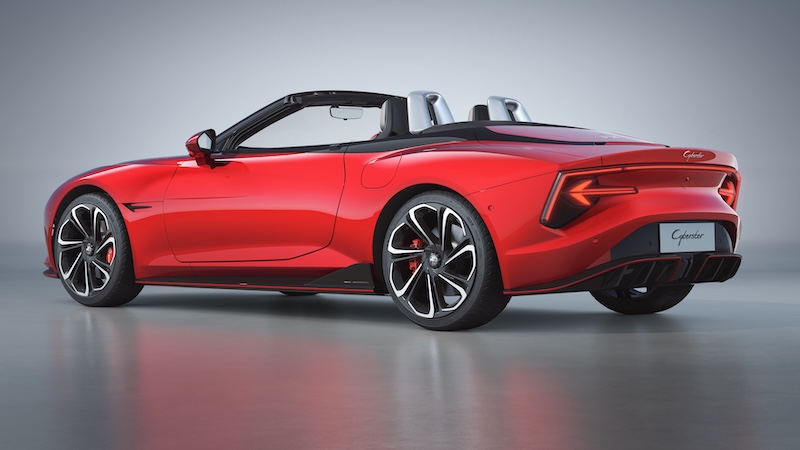
Electric evolution
Fast forward two decades, and its replacement – the MG Cyberster – finally arrives in South Africa.
It’s an attractive roadster that has mostly received praise for its design, led by Carl Gotham, with significant contributions from design chief Robert Lemmens and senior designer Joscha Thielen.
Bit of a porker, what?
Weighing in at 1 985 kg and with a length of 4 535 mm, it’s a substantial car, especially compared to the 2002–2005 MG TF and petite 1962–1980 MGB Roadster.
Besides the enormous weight difference (about a tonne), the MG Cyberster is also half a metre longer than these older MGs, measuring 4 535 mm from snout to tail. That’s still shorter than the Mercedes-AMG SL43’s 4 700 mm, but just about equal in length to the Porsche 911 Carrera cabriolet.
This is particularly interesting, as some reviewers have described the MG Cyberster as more of a grand tourer than a true sports car. However, its compact dimensions and two-seat configuration might challenge that classification. A bit more about that later.
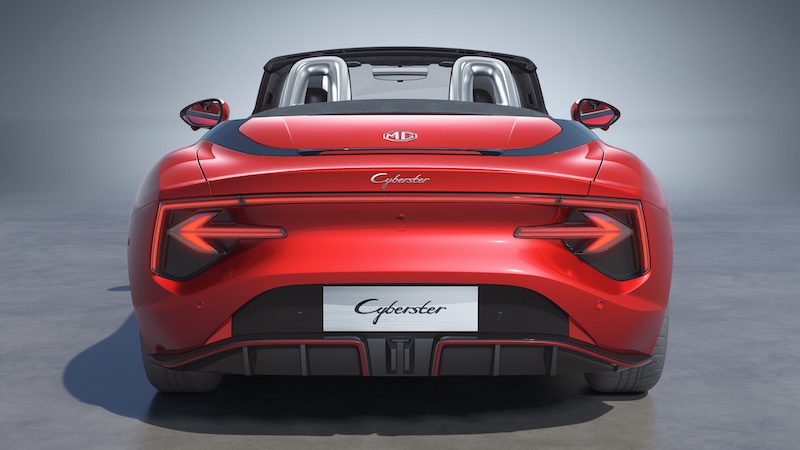
Performance and powertrain
Beneath its sleek, alluring exterior, the MG Cyberster AWD GT houses a dual-motor setup delivering 375 kW and 725 Nm of torque. This all-electric powertrain rockets the Cyberster from 0 to 60 miles per hour (97 km/h) in a mere 3,4 seconds before reaching a top speed of 200 km/h.
While many cars boast higher top speeds, 200 km/h is more than fast enough, and certainly illegal anywhere but on a racetrack.
There’s a milder and slightly lighter rear-wheel-drive Cyberster too, but for now, MG only sells the all-wheel-drive GT version in South Africa.
In the GT, the 77 kWh battery offers a respectable range of 443 km on a single charge, making it suitable for commuting, breakfast runs, and road trips.
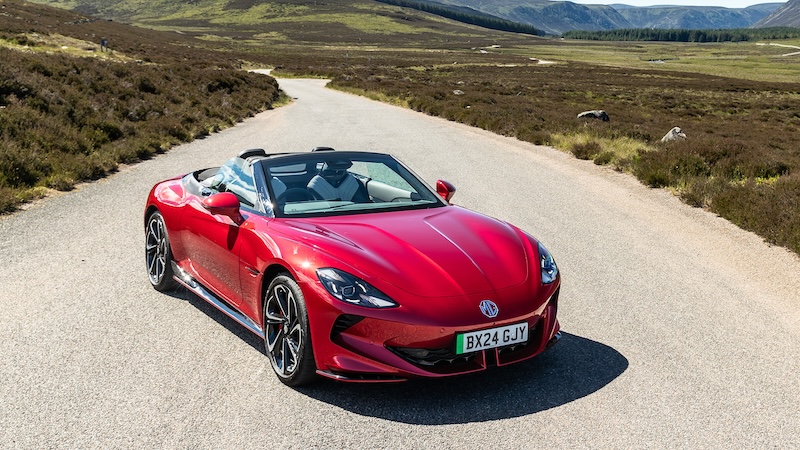
Road manners
Though I’ve acquainted myself with a “Diamond Red” example of the Cyberster in Cape Town, an opportunity to drive the car will only arrive later in 2025.
Testers who have driven the car have praised its impressive performance and grip, but some have noted that its 2-tonne mass slightly dampens the handling dynamics. The weight can also challenge the suspension, occasionally making it difficult for the car to remain firmly planted on the road, some claimed.
Design
Perhaps the Cyberster’s most striking feature is its electric scissor doors. They can be raised or lowered remotely or manually, ensuring you arrive or depart with a dash of fanfare. MG has equipped them with built-in sensors to prevent damage during the opening procedure.
The soft-top roof mechanism looks reassuringly simple and transitions in just 15 seconds.
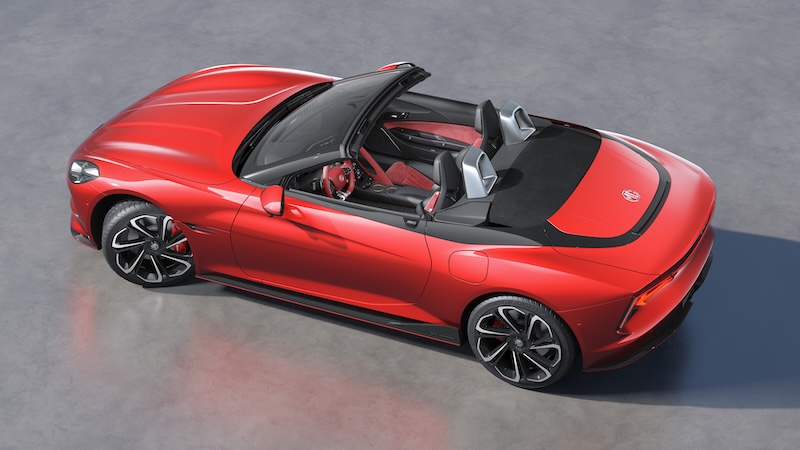
Interior
Inside, the MG Cyberster features a tech-forward cabin that blends comfort with cutting-edge connectivity. Enhancing the experience is an 8-speaker Bose audio system, delivering rich, immersive sound.
Drivers are treated to three digital screens, while an additional screen between the driver and passenger ensures seamless access to controls and information. Unfortunately the rim of the steering wheel partly obscures the screens that flank the central (instrument) screen.
Related to this problem is that the Cyberster’s seating position is relatively high for a sports car, which may cause taller drivers and passengers to find their forward view obstructed by the top edge of the windscreen.
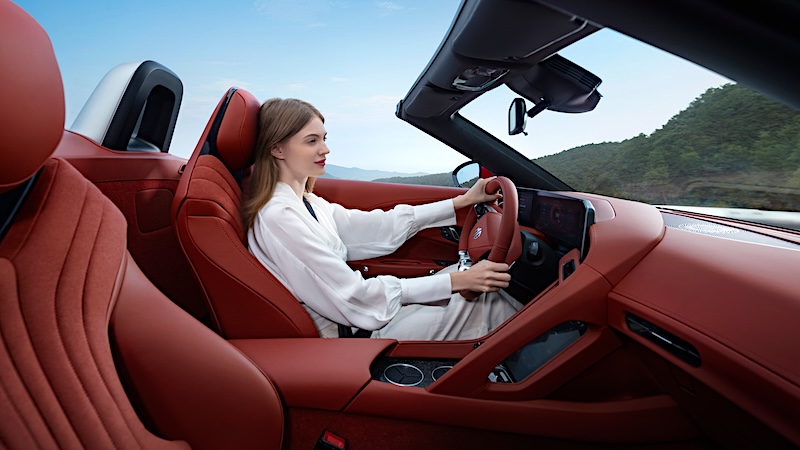
Luxurious and practical
The interior comes standard in a striking red and charcoal colour scheme, with grey available as an optional alternative. Build quality is top-notch and MG did not skimp on the quality of the materials used.
Adding to its practicality, the Cyberster features vehicle-to-load functionality, enabling drivers to power most electric devices directly from the car, whether for outdoor adventures or emergency situations.
The Cyberster provides 200 litres of boot space when the roof is stowed away and 249 litres when the roof is up. There is no ‘frunk’ or ‘froot’ under the bonnet, so you will have to travel light.
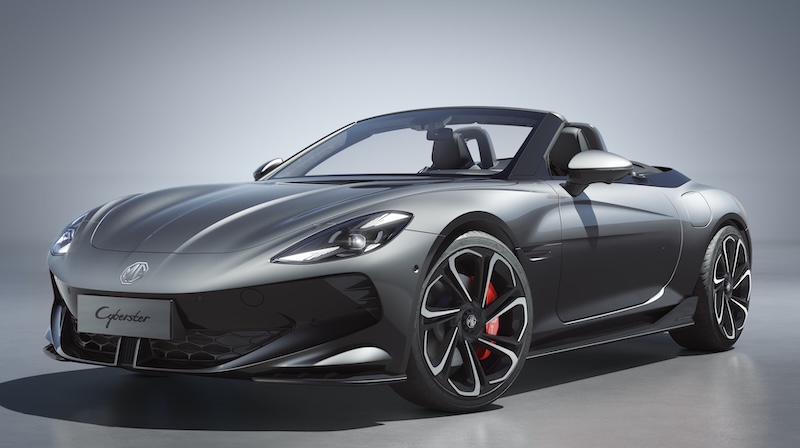
Exterior colours
An array of vibrant exterior colours complement the MG Cyberster’s bold aesthetic. Drivers can choose from Diamond Red, Ivory White, Andes Grey (above), Mystic Teal (below), Inca Yellow, and Cosmic Silver.
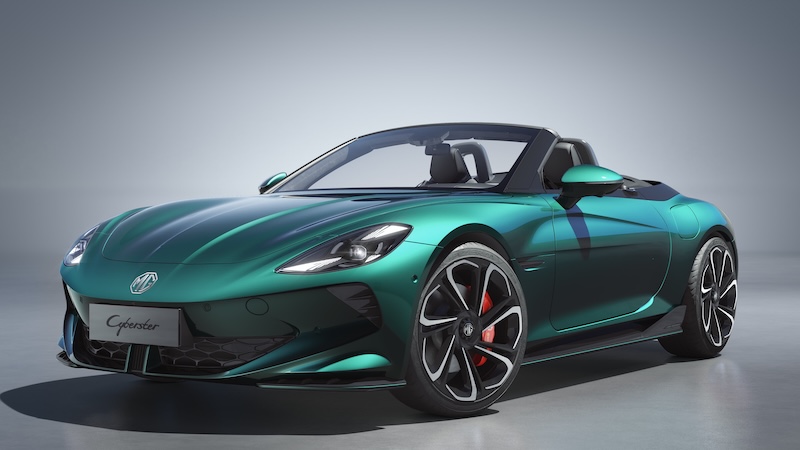
The car’s bold design is further elevated by 20-inch alloy wheels paired with eye-catching red brake callipers. Like many modern performance vehicles, the Cyberster comes equipped with a tyre repair kit instead of a traditional spare.
Value for money?
A prospective performance car owner might find it hard to match the value offered here without spending significantly more on a rival brand’s offering. For instance, imagine the price tag Jaguar would attach to an electric F-Type – likely a considerable premium over the Cyberster’s price.

The recently retired Jaguar F-Type 75 Coupe (V8; 331 kW; 580 Nm; 1,780 kg) carried a price tag of R2,1m. An electric version, however, could easily have approached the R3m mark. How did we arrive at that estimate? While it’s admittedly a rough calculation, the comparison is worth considering.
Take, for example, the Porsche range: a base model Taycan starts at R3 million, while the entry-level Panamera is priced just shy of R2,3 million. And that’s before you factor in optional extras – an almost inevitable expense when buying a Porsche. It’s not uncommon for buyers to spend an additional R300 000 on customisation alone.
Comparing performance
So, how much would it cost to get similar acceleration to that of the MG Cyberster from a car made by an established luxury sports car brands?
Well, the Porsche 718 Spyder RS and the BMW M8 Competition convertible can sprint from 0 to 100 km/h in 3,4 and 3,3 seconds, respectively. The Porsche sells for R3,5m, while BMW asks R3,6m for the M8 Competition – more than double the Cyberster’s ticket.
Comparing price
Taking it a few notches down, let’s say you have about R1,4m to blow on an open-top sports car. What else is on offer? The BMW Z4 M40i (R1,34m) is a tantalising option, but that’s more or less where it ends. There simply aren’t as many drop-top options as 10 or 20 years ago.
The enticing Mercedes-Benz CLE300 4Matic cabriolet AMG Line has the advantage of more seats, but it costs R1,6m. That’s R200 000 more than the fully loaded MG, even before you’ve added extras to the Benz.
Going up the ladder, there’s the Porsche 718 Boxster GTS 4.0 auto, which requires R2,1m, while the BMW M4 competition convertible M xDrive will make a R2,34m hole in your pocket.
How about a hatch?
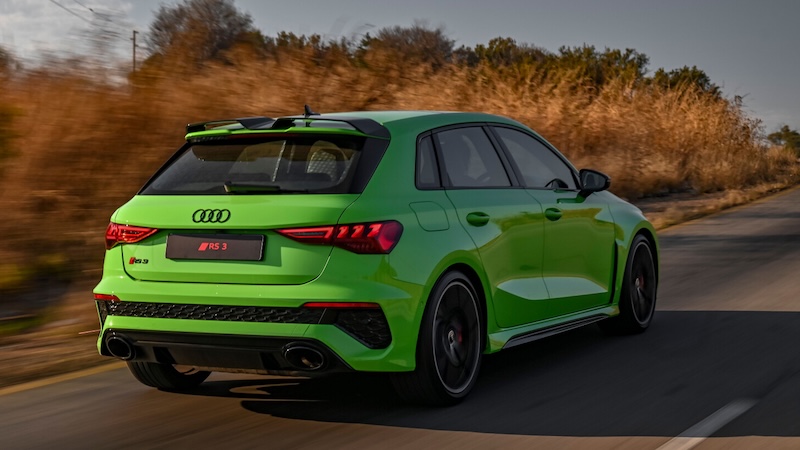
But wait: we’re not giving up just yet. If you’re willing to forego the open-air experience and the low-slung stance of the MG Cyberster, you could buy a hyper hatch. Here are three options: the Audi RS3 (R1 330 800; shown above), the Mercedes-AMG A45 S (R1 475 690), and the Mercedes-AMG A45 S 45 S Limited Edition (R1 888 890).
This trio could embarrass the MG in a number of racing scenarios (except drag races), but they don’t offer the magic of drop-top cruising nor the visual drama of a sleek roadster with trick doors.
Suddenly range anxiety doesn’t seem so terrible!
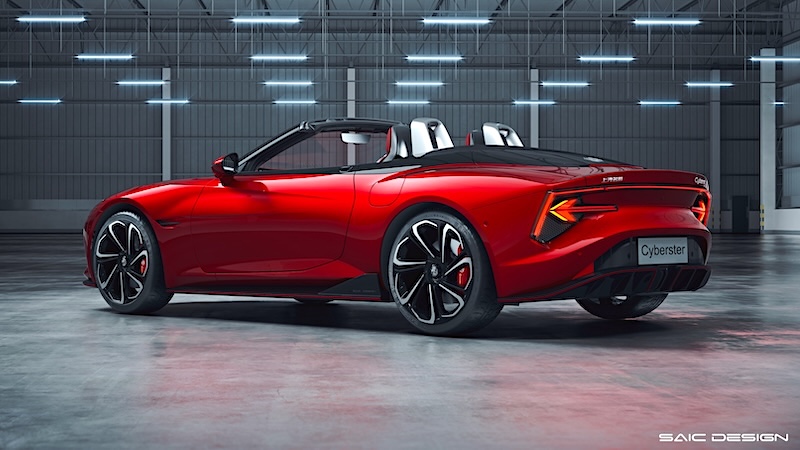
Conclusion
Arriving as the EV market gains momentum locally, the Cyberster is a welcome addition to South Africa’s growing electric offering.
With its competitive pricing and striking presence, it promises to challenge perceptions of EVs while offering a sustainable yet exhilarating driving experience – for those who can afford it.
Welcome back, MG!
For more of MG Motors’ back story, including the 405 km/h top-speed run in 1959 at Bonneville in the US, visit mg.co.uk/mg-centenary.


